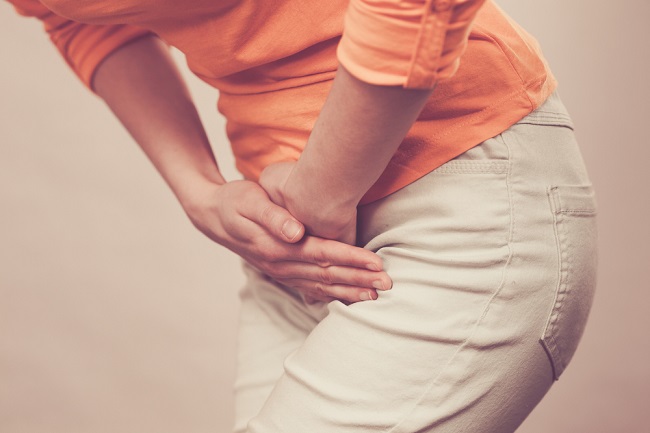
Most of the time, we do not pay attention to our bladder. It is only when we get that little notification in our brains that we remember it’s there, it’s full, and it needs to be taken care of.
Other than that brief moment several times a day, our bladder health is often pushed to the back of our minds. However, when the health of your bladder starts to deteriorate, you may become much more aware that it's there.
What is the Bladder?
Your bladder is a very important organ. It’s a hollow, balloon-shaped organ that’s mainly made up of muscles. When it’s empty, it tends to look like a deflated balloon, but this changes as it fills up. On average, your bladder can store around 2 cups of urine.
What are the Main Functions of the Bladder?
The bladder is connected to the kidneys by two tubes called ureters. Urine is produced in the kidneys and it flows through these tubes into the bladder. The bladder is made up of four layers:
- The Epithelium – This first layer of the bladder acts as a lining.
- The Lamina Propria – This second layer consists of connective tissue, muscle and blood vessels.
- Muscularis Propria – This layer is wrapped around the lamina propria. This layer, also known as the detrusor muscle, consists of thick, smooth muscles.
- The Perivesical Tissue – This final, outer layer is made up of fat, fibrous tissue and blood vessels.
The opening at the bottom of the bladder is connected to the urethra. This is pinched tight by a circular, muscular sphincter to prevent urine leakage. When you urinate, the detrusor muscles of your bladder contract to squeeze the urine out of the bladder.


What Problems are Associated with the Bladder?
When your bladder health starts to decline, you may experience:
- Pelvic floor muscle weakness – If you do not maintain your pelvic floor muscles, they can lose their strength; this can result in a variety of pelvic floor disorders such as urinary incontinence and pelvic organ prolapse.
- Incontinence – A decrease in pelvic floor muscle strength can lead to an overactive bladder and stress urinary incontinence.
- Pelvic organ prolapse – Weakened pelvic floor muscles can cause one or more of your pelvic organs to droop from their naturally elevated position.
- UTIs - Women have shorter urethras than men; this mean that women are more likely to get a bladder infection as bacteria from outside the body can get into the urinary system easier.
- Cystitis – Infections and damage to the urethra and bladder can cause cystitis.
- Bedwetting and Nocturia – Some people may struggle to produce the hormone that wakes us up to urinate. Others cannot hold their bladder at all throughout the night; it’s normal to go to the bathroom 4 to 8 times a day, and no more than twice a night.
Kegel8’s Top Tips for a Happy, Healthy Bladder
- Kegel! - Keep your pelvic floor muscles strong with pelvic floor muscle training to help hold urine in the bladder.
- Keep hydrated - Drink plenty of water; 6 to 8 cups of water each day to keep the bladder healthy.
- Ditch the drink - Cut down on the amount of caffeine and alcohol you drink – these may upset your bladder. Limit your intake of coffee, tea or fizzy drinks as these can increase bladder activity and lead to leakage.
- Relax - Women should sit to go to the toilet, not hover over the seat, as hovering can make it hard for the muscles to relax.
- Don’t rush - Take your time when on the toilet so that your bladder can fully empty – if you rush, and do not empty your bladder fully, you could get a bladder infection over time.
- Fuss about food - Stay away from foods that bother the bladder; some foods can worsen incontinence. Try to avoid foods like chocolate (also a source of caffeine), as well as spicy or acidic foods likes tomatoes and citrus fruits.
- Let it breathe – Wearing loose clothing will allow air to keep the area around the urethra dry. Tight-fitting clothing and nylon underwear can trap moisture and help bacteria grow.
- Stop smoking - Using tobacco is a major cause of bladder cancer.
Make sure that you take care of your bladder health!
Sources
[1] Live Science (2018) Bladder: Facts, Function & Diseases [online]. Live Science [viewed 31/10/18]. Available from https://www.livescience.com/52205-bladder-facts-function-disease.html
[2] NIH (2017) 13 Tips to Keep Your Bladder Healthy [online]. U.S. Department of Health & Human Services [viewed 31/10/18]. Available from https://www.nia.nih.gov/health/13-tips-keep-your-bladder-healthy
[3] Urology Care Foundation (2016) November is Bladder Health Awareness Month [online]. American Urological Association [viewed 31/10/18]. Available from https://www.urologyhealth.org/media-center/press-releases/november-is-bladder-health-awareness-month





